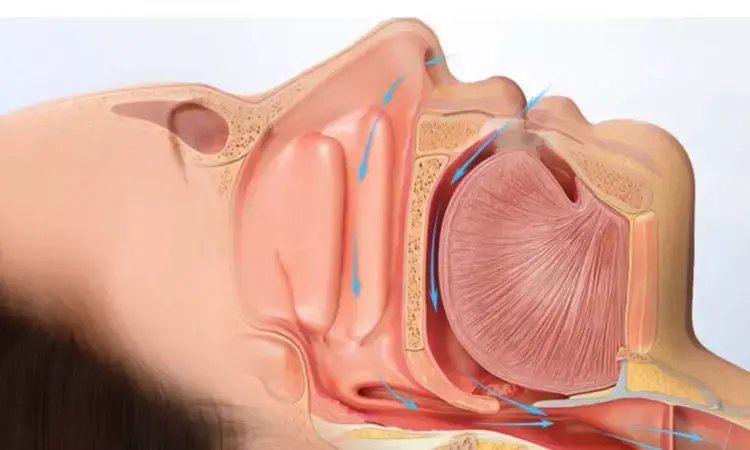- Home
- Medical news & Guidelines
- Anesthesiology
- Cardiology and CTVS
- Critical Care
- Dentistry
- Dermatology
- Diabetes and Endocrinology
- ENT
- Gastroenterology
- Medicine
- Nephrology
- Neurology
- Obstretics-Gynaecology
- Oncology
- Ophthalmology
- Orthopaedics
- Pediatrics-Neonatology
- Psychiatry
- Pulmonology
- Radiology
- Surgery
- Urology
- Laboratory Medicine
- Diet
- Nursing
- Paramedical
- Physiotherapy
- Health news
- Fact Check
- Bone Health Fact Check
- Brain Health Fact Check
- Cancer Related Fact Check
- Child Care Fact Check
- Dental and oral health fact check
- Diabetes and metabolic health fact check
- Diet and Nutrition Fact Check
- Eye and ENT Care Fact Check
- Fitness fact check
- Gut health fact check
- Heart health fact check
- Kidney health fact check
- Medical education fact check
- Men's health fact check
- Respiratory fact check
- Skin and hair care fact check
- Vaccine and Immunization fact check
- Women's health fact check
- AYUSH
- State News
- Andaman and Nicobar Islands
- Andhra Pradesh
- Arunachal Pradesh
- Assam
- Bihar
- Chandigarh
- Chattisgarh
- Dadra and Nagar Haveli
- Daman and Diu
- Delhi
- Goa
- Gujarat
- Haryana
- Himachal Pradesh
- Jammu & Kashmir
- Jharkhand
- Karnataka
- Kerala
- Ladakh
- Lakshadweep
- Madhya Pradesh
- Maharashtra
- Manipur
- Meghalaya
- Mizoram
- Nagaland
- Odisha
- Puducherry
- Punjab
- Rajasthan
- Sikkim
- Tamil Nadu
- Telangana
- Tripura
- Uttar Pradesh
- Uttrakhand
- West Bengal
- Medical Education
- Industry
Study links sleep-related hypoxia to incident atrial fibrillation

USA: A recent study published in the Journal of the American Heart Association has revealed an association between sleep-related hypoxia and incident atrial fibrillation (AF).
"The association was consistent across three hypoxia measures, persistent after adjustment for pulmonary physiologic impairment," the researchers wrote. "Findings identify a strong role for sleep‐related hypoxia in atrial fibrillation development without pulmonary physiologic interdependence."
Atrial fibrillation is the most common sustained cardiac rhythm affecting 5.2 million people in the US, and is projected to rise to 12.1 million by 2030. Its considerable death and morbidity substantially impact public health. Therefore, efforts to identify targetable risk factors are underway. As highlighted in a recent American Heart Association Scientific Statement, highly prevalent, yet underdiagnosed, sleep-disordered breathing has emerged as a risk factor for AF.
Reena Mehra, Cleveland Clinic Foundation, Cleveland, OH, and colleagues leveraged a large clinical cohort to clarify sleep‐disordered breathing and sleep‐related hypoxia in incident AF development given the yet unclear contributions of sleep‐related hypoxia and pulmonary physiology in sleep‐disordered breathing and AF.
The retrospective cohort comprised patients who underwent sleep studies at Cleveland Clinic from 2000 to 2015. Apnea hypopnea index, minimum and mean oxygen saturation, percentage time oxygen saturation <90%, and maximum end‐tidal carbon dioxide were examined on incident AF adjusted for sex, age, body mass index, race, cardiopulmonary disease and risk factors, positive airway pressure, and antiarrhythmic medications using Cox proportional hazards models. Those with spirometry were additionally adjusted for forced vital capacity, forced expiratory volume in 1 second, and forced expiratory volume in 1 second/forced vital capacity.
The cohort comprising 42 057 individuals were included (50.7±14.1 years, 51.3% men, median body mass index 33.2 kg/m2). 4.6% of individuals developed atrial fibrillation over five years.
The study led to the following findings:
- A 10‐unit apnea-hypopnea index increase was associated with 2% higher AF risk (hazard ratio [HR], 1.02).
- A 10‐unit increase in percentage time oxygen saturation <90% and 10‐unit decreases in mean and minimum oxygen saturation were associated with 6% (HR, 1.06), 30% (HR, 1.30), and 9% (HR, 1.09) higher AF risk, respectively.
- After adjustment for spirometry (n=9683 with available data), only hypoxia remained significantly associated with incident AF, although all coefficients were stable.
"Our findings are clinically relevant to inform risk stratification and studies to identify endophenotypes inherent to hypoxia and ventilatory instability that may confer a greater risk of atrial arrhythmogenic and may be more responsive to interventions focused on breathing stabilization such as nocturnal supplemental oxygen," the researchers wrote.
Reference:
Heinzinger CM, Thompson NR, Milinovich A, Diniz Araujo ML, Orbea CP, Foldvary-Schaefer N, Haouzi P, Faulx M, Van Wagoner DR, Chung MK, Mehra R. Sleep-Disordered Breathing, Hypoxia, and Pulmonary Physiologic Influences in Atrial Fibrillation. J Am Heart Assoc. 2023 Nov 10:e031462. doi: 10.1161/JAHA.123.031462. Epub ahead of print. PMID: 37947123.
Dr Kamal Kant Kohli-MBBS, DTCD- a chest specialist with more than 30 years of practice and a flair for writing clinical articles, Dr Kamal Kant Kohli joined Medical Dialogues as a Chief Editor of Medical News. Besides writing articles, as an editor, he proofreads and verifies all the medical content published on Medical Dialogues including those coming from journals, studies,medical conferences,guidelines etc. Email: drkohli@medicaldialogues.in. Contact no. 011-43720751


